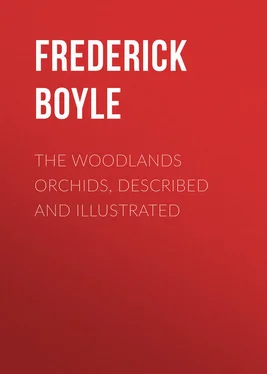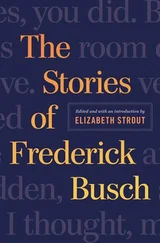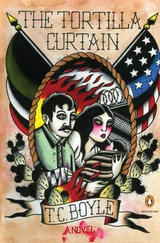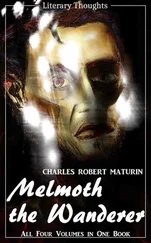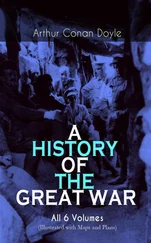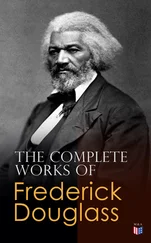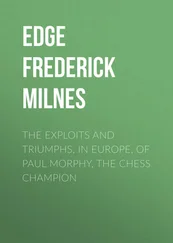Frederick Boyle - The Woodlands Orchids, Described and Illustrated
Здесь есть возможность читать онлайн «Frederick Boyle - The Woodlands Orchids, Described and Illustrated» — ознакомительный отрывок электронной книги совершенно бесплатно, а после прочтения отрывка купить полную версию. В некоторых случаях можно слушать аудио, скачать через торрент в формате fb2 и присутствует краткое содержание. ISBN: , Жанр: foreign_antique, foreign_prose, на английском языке. Описание произведения, (предисловие) а так же отзывы посетителей доступны на портале библиотеки ЛибКат.
- Название:The Woodlands Orchids, Described and Illustrated
- Автор:
- Жанр:
- Год:неизвестен
- ISBN:http://www.gutenberg.org/ebooks/32205
- Рейтинг книги:5 / 5. Голосов: 1
-
Избранное:Добавить в избранное
- Отзывы:
-
Ваша оценка:
- 100
- 1
- 2
- 3
- 4
- 5
The Woodlands Orchids, Described and Illustrated: краткое содержание, описание и аннотация
Предлагаем к чтению аннотацию, описание, краткое содержание или предисловие (зависит от того, что написал сам автор книги «The Woodlands Orchids, Described and Illustrated»). Если вы не нашли необходимую информацию о книге — напишите в комментариях, мы постараемся отыскать её.
The Woodlands Orchids, Described and Illustrated — читать онлайн ознакомительный отрывок
Ниже представлен текст книги, разбитый по страницам. Система сохранения места последней прочитанной страницы, позволяет с удобством читать онлайн бесплатно книгу «The Woodlands Orchids, Described and Illustrated», без необходимости каждый раз заново искать на чём Вы остановились. Поставьте закладку, и сможете в любой момент перейти на страницу, на которой закончили чтение.
Интервал:
Закладка:
This system of travelling at leisure from settlement to settlement enabled him to pick up a few necessary words of each language, and to give warning of his approach to the next tribe. The Pintados welcomed him in a quiet fashion – that is, the chiefs did not object when he repaired an empty hut and took possession. It was at the end of a long ‘street,’ parallel to the river. The rude dwellings were not scattered. Each stood opposite to its fellow across the way, and Roezl noticed a large flat stone in the middle between every pair. Towards nightfall the Indians trooped back from their fields; but all the women and grown girls entered at one end of the village, the men at the other. This was curious. As they marched up, the former dispersed in huts to the right hand, the latter to the left, each sex keeping to its own side of the stones. After depositing their tools the men came out and gathered silently around the strangers’ quarters – only very young children ran to and fro. After a time the women reappeared with steaming calabashes, which they bore half across the road, and set, each of them, on the stone before her dwelling. Then they returned. Forthwith the males strolled back, carried the supper to their respective huts, and in due time replaced the empty calabash upon the stone, whence the women removed it.
It will be understood that these strange ceremonies interested Roezl. Evidently the husbands lived on one side of the street, the wives and young children on the other. The moon was full and he watched for hours. After supper the males returned to squat and smoke around his hut, scarcely speaking; but one after another they withdrew presently, each to his own abode. So long as the moonlight enabled Roezl to observe, not one crossed the way. And afterwards he discovered that this is an eternal rule – a husband never enters his wife’s dwelling. The separation of the sexes is complete.
Long before satisfying himself on this point Roezl saw enough to convince him that the usages of this secluded people must be well worth study. He remained among them as long as he could, and even made memoranda – the first and only time, I believe, that he kept records other than botanical or scientific. It may be hoped that they survive and will come to light, since his papers are now stored in the museum at Prague. I am dependent on the memory of those whom he amused with curt stories of adventure over pipe and glass on his visits to England. They are many, and they preserve the liveliest remembrance of one to whom Johnson’s remarks on the greatest of modern orators are peculiarly applicable. ‘If a man were to go by chance at the same time with Burke under a shed to escape a shower, he would say, “This is an extraordinary man.”’ Unfortunately, it is the most striking observations alone which they recall, with but a vague impression of others.
Every hearer asked, of course, how the race could avoid extinction under such circumstances? But it appears that the separation is only public – an exaggerated prudery, one might describe it, though we may be sure that the sentiment lies infinitely deeper. The sexes work apart, as has been said; after the men have cleared a piece of ground they leave it to the women, and clear another for themselves. But when a youth has a mind to marry, in the first place he builds a hut in the forest. Then he awaits the train of women returning, steps gently among them, and takes the maiden of his fancy by the hand. She throws him off at once if disinclined, and there is an end of it; otherwise she suffers him to lead her a step before freeing herself. Day after day in that case the invitation is repeated, and the maiden takes two steps, then three, until at length she quits the procession entirely and surrenders. There is no ceremony of marriage, but, so far as Roezl could gather, the bond is absolutely sacred; in fact, if we think of it, those conditions of life forbid intrigue. It should be added that the other women and girls studiously ignore these proceedings, and that till the last moment a damsel may change her mind, repulsing the lover favoured hitherto.
A bride remains in the woodland hut for several weeks, not a soul visiting her except the husband. Meantime he builds a ‘town house’ for himself, and the mother or female relatives build one opposite for his wife. In fixing the stone between them there is a ceremony, as Roezl gathered, but the nature of it he was unable to understand. Though the pair never meet again in public as long as they live, they spend as much time as they please together in the forest. And really, after due consideration, I cannot but think that the system shows remarkable sagacity. Truth compels me to add, however, that Roezl suspected infanticide. We may hope he was mistaken. Why should a people living as do these restrict the number of their children? The battle for existence is not desperate with them apparently, since they till the soil, and their territory, in effect, is boundless. No Indian race of South America feels the pride of caste; if these do, they are a notable exception in that as in other respects. Girls receive no dower; the expense of marriage, as has been seen, is nil . Why should they limit the family? We know that obvious reason does not always guide the savage in his habits. But when a painful fact is not assured we may allow ourselves the comfort of doubting it.
This is all I have been able to collect about a most extraordinary people. My informants do not recollect, if they heard, whether the separation of the sexes was peculiar to this clan or general among the Pintado Indians. In fact, I have nothing more to say about them.
It was here, however, that Roezl met with an adventure which he often told. His hut, as has been mentioned, was the last of the row – a ruin patched up to keep the baggage dry. He always carried a folding tressle and a light board to fix upon it, which made a sort of desk, with a camp-stool to match. One evening he set himself as usual to write labels and memoranda for his herbarium. The description of a curious plant secured that day proved difficult, and darkness had long set in. So absorbed was the enthusiast in dissecting its anatomy that he gave no attention to a loud purr, though conscious of the sound for some moments. At length he raised his eyes. By the open doorway stood a creature whose dusky fur glistened like silk in the lamplight, and great yellow eyes stared into his. It was a black jaguar, rarest and most savage of all felines.
So they remained, staring. Roezl felt his hour had come. He could not have moved a limb; his hair rose and the sweat poured down. The jaguar also kept still, purring louder and louder. Its velvet lips were slightly raised, showing a gleam of the huge fangs. Presently it drew nearer, still purring – came up to the tressle – arched his back like a cat, and pressed against it. Crash fell desk, lamp, specimen box, camp-stool and enthusiast – a clattering overthrow! The servants rushed in. No jaguar was there.
Roezl used to attribute his escape to the practice of never carrying arms. When the brute was approaching, he must have fired had a weapon been handy – no man could resist the impulse. And then, whatever the issue of the shot, he would certainly have died.
THE CATTLEYA HOUSE
With L. elegans are lodged fine examples of Cattleyas gigas and aurea, with some of their varieties; generated, as we may assume, by natural hybridisation. These rank among the supreme treasures of the orchidist, unequalled for size and rarity – perhaps for beauty. To those who have not seen the offspring it might seem impossible that the stately loveliness of the parents could be excelled. But by a very simple process Nature achieves the feat – she combines their charms.
Of Cattleya gigas we have some two hundred specimens. It is the largest of the genus, saving its own hybrids, a native of New Granada, discovered by Warcewicz in 1848. He sent no plants home, and though a few were despatched afterwards, Roezl practically introduced the species in 1870. Conscious of supreme merit, it is far from eager to bloom; but at Woodlands we do not personally feel this drawback.
Читать дальшеИнтервал:
Закладка:
Похожие книги на «The Woodlands Orchids, Described and Illustrated»
Представляем Вашему вниманию похожие книги на «The Woodlands Orchids, Described and Illustrated» списком для выбора. Мы отобрали схожую по названию и смыслу литературу в надежде предоставить читателям больше вариантов отыскать новые, интересные, ещё непрочитанные произведения.
Обсуждение, отзывы о книге «The Woodlands Orchids, Described and Illustrated» и просто собственные мнения читателей. Оставьте ваши комментарии, напишите, что Вы думаете о произведении, его смысле или главных героях. Укажите что конкретно понравилось, а что нет, и почему Вы так считаете.
